
Aldosterone nongenomically induces angiotensin II receptor dimerization in rat kidney: Role of mineralocorticoid receptor and NADPH oxidase (2019)
Title : Aldosterone nongenomically induces angiotensin II receptor dimerization in rat kidney: Role of mineralocorticoid receptor and NADPH oxidase
Researcher : Sinphitukkul, K., Manotham, K., Eiam-Ong, S., Eiam-Ong, S.
Abstract :
Introduction: Previous in vitro studies demonstrated that aldosterone nongenomically induces transglutaminase (TG) and reactive oxygen species (ROS), which enhanced angiotensin II receptor (ATR) dimerization. There are no in vivo data in the kidney.
Material and methods: Male Wistar rats were intraperitoneally injected with normal saline solution, or aldosterone (Aldo: 150 μg/kg BW); or received pretreatment with eplerenone (mineralocorticoid receptor (MR) blocker, Ep. + Aldo), or with apocynin (nicotinamide adenine dinucleotide phosphate (NADPH) oxidase inhibitor, Apo. + Aldo) 30 min before aldosterone. Thirty minutes after aldosterone injection, protein abundances of dimeric and monomeric forms of AT1R and AT2R, and protein abundances and localizations of TG2 and p47phox, a cytosolic subunit of NADPH oxidase, were determined by Western blot analysis and immunohistochemistry, respectively.
Results: Protein abundances of dimeric forms of AT1R and AT2R were enhanced by 170% and 70%, respectively. Apocynin could block dimeric forms of both receptors while eplerenone inhibited only AT2R. Monomeric protein levels of both receptors were maintained. Aldosterone significantly enhanced TG2 and p47phox protein abundances, which were blunted by eplerenone or apocynin. Aldosterone stimulated p47phox protein expression in both the cortex and the medulla while TG2 was induced mostly in the medulla. Eplerenone or apocynin normalized the immunoreactivity of both TG2 and p47phox.
Conclusions: This is the first in vivo study demonstrating that aldosterone nongenomically increases renal TG2 and p47phox protein expression and then activates AT1R and AT2R dimerizations. Aldosterone-stimulated AT1R and AT2R dimerizations are mediated through activation of NADPH oxidase. Aldosterone-induced AT1R dimer formation is an MR-independent pathway, whereas the formation of AT2R dimer is modulated in an MR-dependent manner.
Keywords: NADPH oxidase; aldosterone; angiotensin II receptor dimerization; mineralocorticoid receptor; nongenomic action; rat kidney.
Link to Academic article: DOI: 10.5114/aoms.2019.87135
Journal : Archives of Medical Science, 2019, 15(6).
Bibliography : Sinphitukkul, K., Manotham, K., Eiam-Ong, S., & Eiam-Ong, S. (2018). Aldosterone nongenomically induces angiotensin II receptor dimerization in rat kidney: role of mineralocorticoid receptor and NADPH oxidase. Archives of Medical Science, 15(6), 1589–1598.
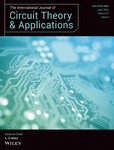
Analytical model of inverse memelement with fractional order kinetic (2022)
Title : Analytical model of inverse memelement with fractional order kinetic
Researcher : Banchuin, R.
Department : Faculty of Engineering & Graduated School of IT, Siam University, Bangkok, Thailand
Email : rawid.ban@siam.edu
Abstract : In this work, the analytical model of inverse memelement with fractional order kinetic has been proposed. The classical yet noncontroversial Caputo fractional derivative has been adopted for modeling such fractional order kinetic due to its simplicity yet accuracy. Based on the proposed model, the analysis of fractional order kinetic inverse memristor has been thoroughly performed where both nonperiodic and periodic excitations have been considered. Analytical formulations of the related parameters, for example, the rate of changes of inverse memristance, area of inverse memristance loop, and area of pinched hysteresis loop, and so on, have been performed. The extension of the proposed model to the fractional inverse memelement has been performed where the fractional inverse memristor has been analyzed. We have found that the inverse memristor still behaves in an opposite manner to the memristor even with the fractional order kinetic. All obtained results have been found to be intuitively applicable to any inverse memelement. The equivalent circuit models of both fractional inverse memristor and fractional inverse memelement have also been presented. This work provides a comprehensive understanding on both inverse memelement with fractional order kinetic and fractional inverse memelement. The realization of the emulator of such inverse memelement with fractional order kinetic and the fractional inverse memelement emulator has been found to be interesting opened research questions.
Link to article : International Journal of Circuit Theory and Applications, 2022, 50(7), pp. 2342–2377. https://doi.org/10.1002/cta.3264
Journal : International Journal of Circuit Theory and Applications / in Scopus
Bibliography : Banchuin, R. (2022). Analytical model of inverse memelement with fractional order kinetic. International Journal of Circuit Theory and applications, 50(7), 2342-2377. https://doi.org/10.1002/cta.3264
ฐานข้อมูลงานวิจัย มหาวิทยาลัยสยาม : https://e-research.siam.edu/kb/analytical-model-of-inverse/

Anatomical and Ultrasonography-Based Investigation to Localize the Arteries on the Central Forehead Region During the Glabellar Augmentation Procedure (2020)
Title : Anatomical and Ultrasonography-Based Investigation to Localize the Arteries on the Central Forehead Region During the Glabellar Augmentation Procedure
Researcher : Phumyoo, T., Jiirasutat, N., Jitaree, B., Rungsawang, C., Uruwan, S., Tansatit, T.
Abstract : Glabellar augmentation is one of the most popular cosmetic procedures but can entail severe complications caused by inadvertent intravascular injection of filler. Nevertheless, few studies have investigated the arteries on the glabellar and central forehead regions. The aim of this study was to correlate the topography and location of the arteries in this area with anatomical landmarks to propose a safety guideline. Two methods were used to investigate the glabellar and central forehead areas: dissection of 19 Thai embalmed cadavers, and ultrasonographic examination of 14 healthy Thai volunteers. At the level of the glabellar point, the horizontal distances from the midline to the arteries were 4.7 mm (central artery), 7.8 mm (paracentral artery), and 14.7 and 19.2 mm (superficial and deep branches of supratrochlear artery). The depths from the skin of the arteries were 3.1 mm (central artery), 4.8 mm (paracentral artery), and 4.2 and 5.9 mm (superficial and deep branches of supratrochlear artery). The periosteal artery was detected in 71.1% as a branch of either the superior orbitoglabellar or the supratrochlear artery. It ran in the supraperiosteal layer for a short course and penetrated the periosteum above the superciliary ridge or above the medial eyebrow, adhering tightly to the bony surface. This study suggests a safe injection technique for the glabella based on a thorough knowledge of arterial distribution and topography and color Doppler ultrasonographic examination prior to the injection, which is recommended to minimize the risk of severe complications. Clin. Anat. 33:370–382, 2020. © 2019 Wiley Periodicals, Inc.
Link to Academic article: https://doi.org/10.1002/ca.23516
Journal : Clinical Anatomy, 2020, 33(3).
Bibliography : Phumyoo, T., Jiirasutat, N., Jitaree, B., Rungsawang, C., Uruwan, S., & Tansatit, T.(2020). Anatomical and Ultrasonography-Based Investigation to Localize the Arteries on the Central Forehead Region During the Glabellar Augmentation Procedure. Clinical Anatomy, 33(3), 370–382.
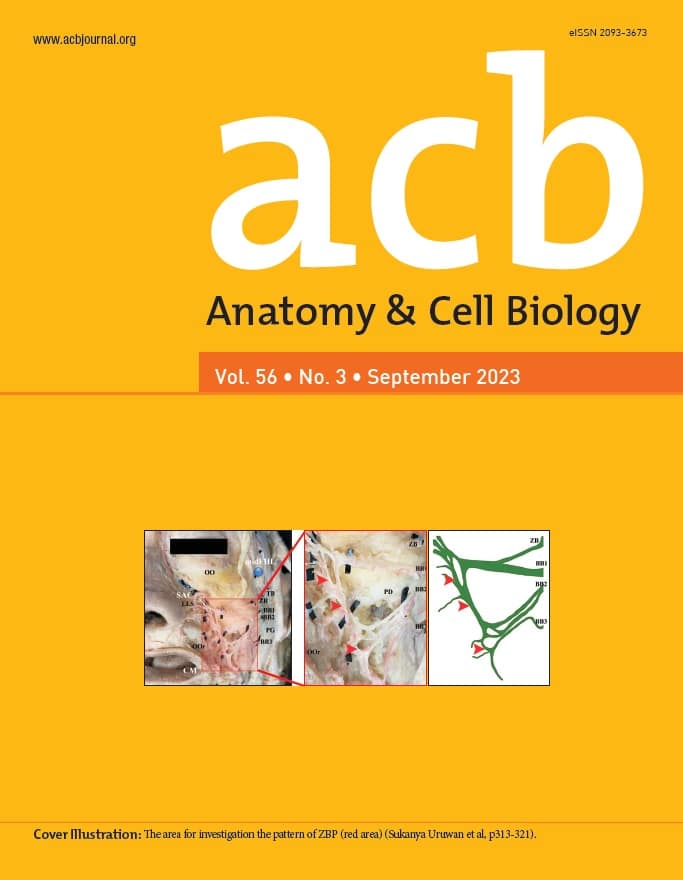
Anatomical knowledge of zygomatico-buccal plexus in a cadaveric study (2023)
Title : Anatomical knowledge of zygomatico-buccal plexus in a cadaveric study
Researcher : Uruwan, S., Rungsawang, C.Sareebot, T., Tansatit, T.
Abstract : The details of the facial nerve pattern were clearly explained in the parotid gland (PG), lateral area of the face, and periorbital areas to prevent the unexpected outcome of medical intervention. However, it remains unclear whether information about the zygomatico-buccal plexus (ZBP) in the masseteric and buccal regions. Therefore, this study aimed to help clinicians avoid this ZBP injury by predicting their common location. This study was conducted in forty-two hemifaces of twenty-nine embalmed cadavers by conventional dissection. The characteristics of the buccal branch (BB) and the ZBP were investigated in the mid-face region. The results presented that the BB gave 2-5 branches to emerge from the PG. According to the masseteric and buccal regions, the BB were arranged into ZBP in three patterns including an incomplete loop (11.9%), a single-loop (31.0%), and a multi-loop (57.1%). The mean distance and diameter of the medial line of the ZBP at the corner of the mouth level were 31.6 (6.7) and 1.5 (0.6) mm respectively, while at the alar base level were 22.5 (4.3) and 1.1 (0.6) mm respectively. Moreover, the angular nerve arose from the superior portion of the ZBP at the alar base level. The BB formed a multiloop mostly and showed a constant medial line of ZBP in an area approximately 30 mm lateral to the corner of the mouth, and 20 mm lateral to the alar base. Therefore, it is recommended that physicians should be very careful when performing facial rejuvenation in the mid-face region.
Keywords: Buccal branch; Facial rejuvenation; Zygomatico-buccal plexus.
Link to article : Anatomy and Cell Biology, 2023, 56(3), pp. 313–321. https://doi.org/10.5115/acb.23.040
Journal : Anatomy and Cell Biology / in Scopus
Citation : Uruwan, S., Rungsawang, C., Sareebot, T., & Tansatit, T. (2023). Anatomical knowledge of zygomatico-buccal plexus in a cadaveric study. Anatomy and Cell Biology, 56(3), 313–321. https://doi.org/10.5115/acb.23.040
ฐานข้อมูลงานวิจัย มหาวิทยาลัยสยาม : –

Anatomical Study of the Dorsal Nasal Artery to Prevent Visual Complications during Dorsal Nasal Augmentation (2021)
Title : Anatomical Study of the Dorsal Nasal Artery to Prevent Visual Complications during Dorsal Nasal Augmentation
Researcher : Tansatit, T., Jitaree, B.,Uruwan, S. Rungsawang, C.,
Abstract : Dorsal nasal augmentation is a common injection associated with ocular complications. Digital compressions on both sides of the nose are recommended during injection. Considering the reported incidences of visual complications, this preventive technique may need an adjustment for more effectiveness to prevent blindness. Therefore, the dorsal nasal arteries (DNAs) were studied by conventional dissections in the subcutaneous and fibromuscular tissues of the nasal dorsum in 60 embalmed cadavers. The results showed that among the 60 faces, 32 faces had bilateral DNAs (53.3%), 23 had dorsal nasal plexus with minute arteries (38.3%), and five had a single dominant DNA (8.3%). The DNA originated from one of the four arterial sources, which influenced the location and course of the artery. These sources included the ophthalmic angular arteries in 21 faces (56.8%), terminal ophthalmic arteries in two faces (5.4%), lateral nasal arteries in 11 faces (29.7%) and facial angular arteries in three faces (8.1%). Consequently, the dominant dorsal nasal artery running close to the midline found in 8% of the cases could make side compressions during nasal dorsum augmentation less effective from preventing ocular complications. However, an adjustment of digital compressions which combines pinching and side compressions is suggested to improve the safety.
Link to article: Plastic and Reconstructive Surgery – Global Open, 2021, 9(11), pp. E3924. https://doi.org/10.1097/GOX.0000000000003924
Journal : Plastic and Reconstructive Surgery – Global Open / in Scopus
Citation : Tansatit, T., Jitaree, B., Uruwan, S. & Rungsawang, C., (2021). Anatomical Study of the Dorsal Nasal Artery to Prevent Visual Complications during Dorsal Nasal Augmentation. Plastic and Reconstructive Surgery – Global Open, 9(11), e3924. https://doi.org/10.1097/GOX.0000000000003924
ฐานข้อมูลงานวิจัย มหาวิทยาลัยสยาม : –
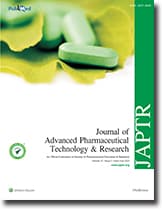
Anti-aging potential and phytochemicals of Centella asiatica, Nelumbo nucifera, and Hibiscus sabdariffa extracts (2020)
Title : Anti-aging potential and phytochemicals of Centella asiatica, Nelumbo nucifera, and Hibiscus sabdariffa extracts
Researcher : Monsicha Khuanekkaphan1, Chanai Noysang2, Warachate Khobjai3
Department : 1 Department of Health and Aesthetics, Thai Traditional Medicine College, Rajamangala University of Technology Thanyaburi, Pathum Thani, Thailand
2 Department of Innovation of Health Products, Thai Traditional Medicine College, Rajamangala University of Technology Thanyaburi, Pathum Thani, Thailand
3 Department of Applied Thai Traditional Medicine, Thai Traditional Medicine College, Rajamangala University of Technology Thanyaburi, Pathum Thani, Thailand
Abstract : Centella asiatica, Nelumbo nucifera Gaertn, and Hibiscus sabdariffa have been used as medicinal plants in Thailand. They are sources of phytochemicals that applications for esthetic and healthcare. The aim of this research was to examine the phytochemical constituents and anti-aging potential of these plants. The phytochemical compounds were performed using gas chromatography-mass spectrometry. The anti-aging activities were evaluated by 2,2-diphenyl-1-picrylhydrazyl (DPPH), 2,2′-azinobis (3-ethylbenzothiazoline-6-sunfonic acid) (ABTS), anti-collagenase, and anti-elastase assays. The main interest phytochemical compounds of ethanolic extracts of C. asiatica, N. nucifera, H. sabdariffa were ethanol, 2-(-Octadecenyloxy), γ-sitosterol and hexadecanoic acid, and ethyl ester, respectively. The DPPH half-maximal inhibitory concentration (IC50) results of C. asiatica, N. nucifera, and H. sabdariffa were 0.32 ± 0.01, 0.34 ± 0.00, and 0.35 ± 0.01 mg/mL, respectively. The ABTS result of H. sabdariffa extract showed high inhibitory activity at IC50of the extract was 0.62 ± 0.12 mg/mL. The percentage of collagenase inhibition of C. asiatica, N. nucifera, and H. sabdariffa at 1.0 mg/mL was 78.13 ± 4.42, 85.94 ± 2.21, and 90.63 ± 0.00, respectively. The C. asiatica extract had a high percentage of elastase inhibition. Consequently, these research results suggest that phytochemicals may also provide a range of esthetic and health benefits. The phytochemical constituent could be used as anti-aging active ingredient for cosmetic and pharmaceutical industrials.
Keywords: Anti-aging, Centella asiatica, Hibiscus sabdariffa, Nelumbo nucifera, phytochemical
Link to Academic article: DOI: 10.4103/japtr.JAPTR_79_20
Journal : Journal of Advanced Pharmaceutical Technology and Researchthis link is disabled, 2020, 11(4).
Bibliography : Khuanekkaphan, M., Noysang, C., & Khobjai W. (2020). Anti-aging potential and phytochemicals of Centella asiatica, Nelumbo nucifera, and Hibiscus sabdariffa extracts. J Adv Pharm Technol Res, 11(4), 174-178. Retrieved from https://www.japtr.org/text.asp?2020/11/4/174/297699

Applying a mixed method of quantitative and qualitative design in explaining the travel motivation of film tourists in visiting a film-shooting destination (2015)
Title : Applying a mixed method of quantitative and qualitative design in explaining the travel motivation of film tourists in visiting a film-shooting destination
Researcher : Bongkosh Rittichainuwat and Suphaporn Rattanaphinanchai
Department : Service Industry Management, Siam University, Bangkok, Thailand
E-mail : Bongkosh N. Rittichainuwat ngamson@gmail.com
Abstract : This study aims to: 1) describe the travel motivations of the types of film tourists proposed by Macionis (2004), specifically, serendipitous tourists, specific film tourists, and general film tourists, in visiting a film-induced tourist destination; and 2) empirically test the assumption that film tourism is incidental and neither the main nor the sole motivation of most tourists traveling to a film destination. A mixed method of quantitative and qualitative (a series of self-complete questionnaire surveys over a period of eleven months and a longitudinal study of interviews and participant observations over a period of four years) was used in the study. Out of 1852 samples, the numbers of specific film tourists (10.5%) and general film tourists (19.5%) are less than serendipitous tourists (70%). Though both business and leisure tourists can be specific film tourists, their number is very small. Furthermore, serendipitous tourists can be distributed into almost equal numbers, namely, “incidental serendipitous tourists,” “disinterested serendipitous tourists,” and “sightseeing serendipitous tourists.” While successful films create destination awareness among all types of film tourists, an individual’s favorite film, rather than a successful film, motivated most specific film tourists to take a pilgrimage film trip. This study also highlights the value of the mixed method, of a quantitative and qualitative approach, in explaining film tourism, in regards to unusual behavior of outliers. Whereas the quantitative design increases the generalization of the findings, the qualitative method provides better understanding of contradictory findings without having to eliminate outliers from analysis.
Publication : Tourism Management Vol.46 February 2015
Link to Publication: https://www.sciencedirect.com/journal/tourism-management/vol/46/suppl/C
Bibliography : Rittichainuwat, B. & Rattanaphinanchai, S. (2015). Applying a mixed method of quantitative and qualitative design in explaining the travel motivation of film tourists in visiting a film-shooting destination. Tourism Management, 46, 136-147. 10.1016/j.tourman.2014.06.005
Author details in Scopus: Rittichainuwat, Bongkosh Ngamsom
Scopus Citations: https://www.scopus.com/sources.uri?DGCID=Scopus_blog_post_check2015
Google Scholar Citations: https://scholar.google.com/citations?user=ifUlKJoAAAAJ&hl=en
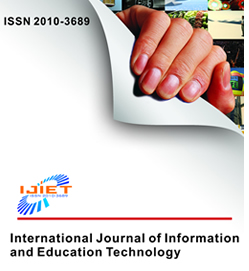
Applying process mining to analyze the behavior of learners in online courses (2021)
Title : Applying process mining to analyze the behavior of learners in online courses
Researcher : Arpasat, P., Premchaiswadi, N., Porouhan, P., Premchaiswadi, W.
Department : Doctor of Philosophy Program in Information Technologyy, Graduate School, Siam University
E-mail :
ฐานข้อมูลงานวิจัย มหาวิทยาลัยสยาม : https://e-research.siam.edu/kb/applying-process-mining-to-analyze/
Link to article: International Journal of Information and Education Technology, 2021, 11(10), pp. 436–443. https://doi.org/10.18178/ijiet.2021.11.10.1547
Publication: International Journal of Information and Education Technology / in Scopus
Bibliography : Arpasat, P., Premchaiswadi, N., Porouhan, P., Premchaiswadi, W. (2021). Applying process mining to analyze the behavior of learners in online courses. International Journal of Information and Education Technology, 11(10), 436–443. https://doi.org/10.18178/ijiet.2021.11.10.1547

Applying the perceived probability of risk and bias toward optimism: Implications for travel decisions in the face of natural disasters (2018)
[dflip id="7244" type="thumb"][/dflip]Researcher : Bongkosh Rittichainuwat, Robert Nelson, Fitri Rahmafitria
Department : Service Industry Management, Siam University, Bangkok, Thailand
E-mail : Bongkosh N. Rittichainuwat ngamson@gmail.com
Abstract : Unperceived risk leads to lack of preparedness. This study aims to examine tourists’ risk perception and travel decisions using as variables demographics, knowledge about safety, and country of residence. Samples were gathered in Thailand, Japan, Australia, and Indonesia. A total of 916 completed questionnaires of five replicated surveys were used in this study. More than halve of the respondents whose country had been affected by the Indian Ocean tsunami in 2004 did not perceive tsunami risk when 10 years has passed. Frequency of tsunami occurrence was positively related to perceived tsunami probability. This study confirms the theory of probability that low frequency of a natural disaster results in unperceived risks. Even if their destination had a history of tsunamis, tourists’ perceived risk of another such occurrence happening during their visit is low (that is, the risk of natural disaster is low). While the literature in earth science found that residents of risky areas tend to be optimistic about the place where they live, our study extends the theory of optimistic bias to indicate that the same optimistic bias is applicable to tourists. Asia and Southeast Asia were perceived as tsunami-prone but tourists still travelled there. Our study found that tourist risk perception was related to frequency of tsunami occurrence and was destination specific. The perception of probability of a natural disaster is also related to proximity and past experience. Replications are necessary to validate results before generalization.
Publication : Tourism Management Vol.66 June 2018
Link to Publication: https://www.sciencedirect.com/journal/tourism-management/vol/66/suppl/C
Bibliography : Rittichainuwat, B., Nelson, R., & Rahmafitria, F. (2018). Applying the perceived probability of risk and bias toward optimism: Implications for travel decisions in the face of natural disasters. Tourism Management, 66, 221-232. DOI: 10.1016/j.tourman.2017.09.013.
Author details in Scopus: Rittichainuwat, Bongkosh Ngamsom
Scopus Citations: https://www.scopus.com/sources.uri?DGCID=Scopus_blog_post_check2015
Google Scholar Citations: https://scholar.google.com/citations?user=ifUlKJoAAAAJ&hl=en
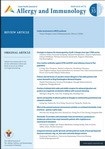
Association of HLA genotypes with Beta-lactam antibiotic hypersensitivity in children (2021)
Title : Association of HLA genotypes with Beta-lactam antibiotic hypersensitivity in children
Researcher : Clin.Prof.Suwat Benjaponpitak
Department : Faculty of Medicine, Siam University, Bangkok, Thailand
E-mail : med@siam.edu
Abstract : Background: Beta-lactam (BL) antibiotics hypersensitivity is common in children. Clinical manifestation of BL hypersensitivity varies from mild to severe cutaneous adverse drug reactions (SCARs).
Objective: To determine the association of HLA genotype and BL hypersensitivity and the prevalence of true drug allergy in patients with history of BL hypersensitivity.
Methods: A case-control study was performed in 117 children with aged 1-18 years. Children with history of non-SCARs BL hypersensitivity were evaluated for true drug hypersensitivity including skin test and drug provocation test. Tolerant control patients were children who could tolerate BL for at least 7 days without hypersensitivity reaction. HLA genotype (HLA-A, HLA-B, HLA-C and HLA-DRB1) were performed in 24 cases and 93 tolerant controls using PCR-SSO (polymerase chain reaction – sequence specific oligonucleotide probes).
Results: There were association of HLA-C*04:06 (OR = 13.14, 95%CI: 1.3-137.71; p = 0.027), and HLA-C*08:01 (OR = 4.83, 95%CI: 1.93-16.70; p = 0.016) with BL hypersensitivity. HLA-B*48:01 was strongly associated with immediate reaction from BL hypersensitivity (OR = 37.4, 95%CI: 1.69-824.59; p = 0.016) while HLA-C*04:06, HLA-C*08:01 and HLA-DRB1*04:06 were associated with delayed reaction (p < 0.05). Among 71 cases who were newly evaluated for BL hypersensitivity, only 7 cases (9.8%) had true BL hypersensitivity.
Conclusions: Less than 10% of children with suspected of BL hypersensitivity have true hypersensitivity. There might be a role of HLA-B, HLA-C and HLA-DRB1 genotype in predicting BL hypersensitivity in Thai children.
Link to Academic article: Asian Pacific Journal of Allergy and Immunology, 2021, 39(3), pp. 197–205. DOI: 10.12932/AP-271118-0449
Journal : Asian Pacific journal of allergy and immunology / in Scopus
Citation : Singvijarn, P., Manuyakorn, W., Mahasirimongkol, S., Wattanapokayakit, S., Inunchot, W., Wichukchinda, N., Suvichapanich, S., Kamchaisatian, W., & Benjaponpitak, S. (2021). Association of HLA genotypes with Beta-lactam antibiotic hypersensitivity in children. Asian Pac J Allergy Immunol. 39(3), 197–205. doi: 10.12932/AP-271118-0449. Epub ahead of print. PMID: 31012593.